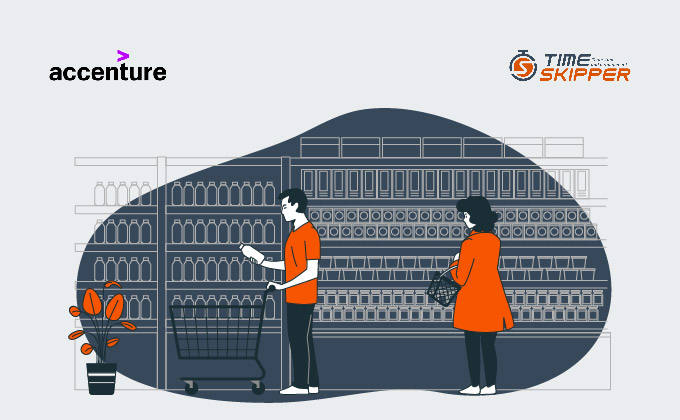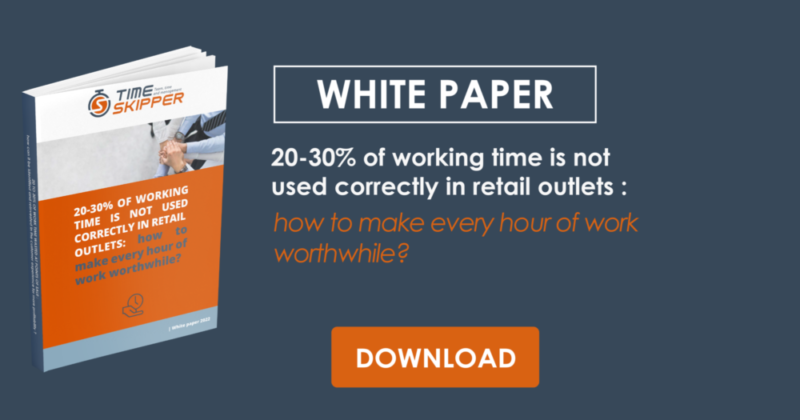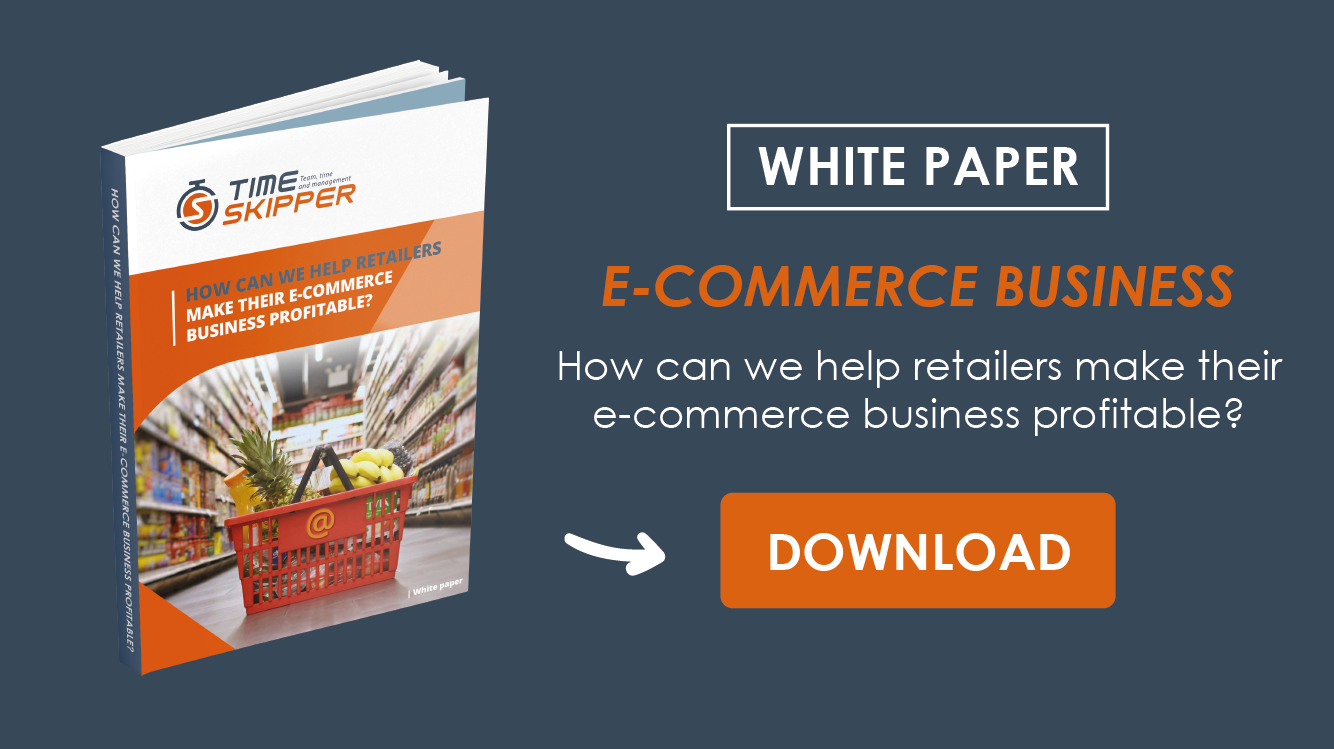Optimising assortments

The current period of inflation has made prices the number one priority for food distributors. Customers’ budgets are under pressure, leading them to reassess their needs, and 60% of them have switched to lower ranges of products such as budget or own-brand lines. The hard discount model is the clear winner in Europe.
Working on their image and prices has become a key issue for supermarkets and hypermarkets to protect their market share and ensure their model remains profitable. One possibility to carefully consider is reducing assortment. The process can lead to an offering that is easier to understand and smooths out the purchase process, responding to a real need for the customer, but it can also save money throughout the value chain, leading to lower prices.
It’s a virtuous cycle for shops and customers, but the challenge lies in how to implement it well. Accenture and partner Timeskipper are here to explain how.
I/ Why reduce assortments?
For years, shops’ turnover has been driven by increasing the number of references. However, carrying a wide assortment of products comes with a marginal cost throughout the product’s value chain, and this cost is now greater than the turnover it generates. Slowing growth no longer allows shops to absorb these costs, and we can see a progressive drop in shelf performance.
Reducing the offer in shops: a risky but proven trend
In 2015, shelves reached saturation, and Tesco decided to reduce the number of references in its shops by 30%. The vast majority of retailers, on the other hand, continued to expand their assortments. They fear seeing their purchase prices go up if they forego the discounts offered by producers in range agreements as well as disappointing customers who will no longer find their products in the shop, leading to lower turnover.
This risk exists, of course, but there is another way to look at it. Certain periods, such as the Covid crisis, have demonstrated that it is possible to have good sales with fewer references in the shop. Consumers, who have also become saturated with too much choice, are calling for a clearer offer and a simpler purchasing process.
With this in mind, Carrefour launched a test phase in its Villabé point of sale, which should lead to a general reduction of 20% in its food assortment and 40% in its non-food assortment in three years. It’s certainly food for thought!
Reduced assortments: potential savings throughout the value chain
Why do you think hard discount shops such as LIDL have lower structural costs in France than supermarkets and hypermarkets while offering ultra-competitive prices? It is because their lighter operating model generates much fewer structural costs, concentrating purchasing potential over greater volumes with a limited number of references, more efficient logistics and better productivity over the sales surface.
Without necessarily going to the same extent, reducing the number of references allows shops to simplify their process management and lower execution costs.
If we look at the average impact of a 20% reduction in assortment in mass-market products and fresh produce, four key levers emerge:
- Production costs are 2% lower: with a reduced assortment and tension on volumes, negotiations with producers can focus more on growing volumes than on range agreements. The goal is to find a win-win balance between suppliers and retailers.
- Logistics and the supply chain: through better picking productivity (meaning more parcels processed by order line combined with less distance for operators to traverse), you can save up to 10% on fresh produce and consider reducing surface area (saving on rent), especially when overflow warehouses are used.
- The shop: by reducing the time spent on shelf management (shelving, checking, labelling, facing, etc.), productivity can be improved by 2.5% in the relevant sectors.
- Stock and breakage: the elimination of certain products, such as those with a low turnover, means savings of almost 10% on the value of stock as well as on the breakage associated with these products.
Currently, the challenge with this approach lies in the art and science of implementing it.
 You want to know more about
You want to know more about
the TimeSkipper platform?
II/ How to reduce assortments?
Bear in mind that the aim of reducing the number of references in the assortment is to structurally reduce the costs that the increase itself generated. We have identified three levers to help us achieve this:
Analyse customer data to choose which products to discontinue
Withdrawing products from a range is not a trivial matter. The risk of losing sales and customers weighs on every decision. Is the consumer willing to buy a substitute product?
If a group of consumers systematically buys one product and not another, isn’t it a good idea to keep it, even if the volume of sales is low? Which products must be on the shelf when the customer needs them, even if the sale is occasional? Are all products, such as fresh produce, eligible for an assortment reduction?
In this respect, an analysis of data linked to customer purchasing behaviour and a very detailed sectoral analysis (catchment area, for example) can be used to guide the reduction of the assortment in a relevant way:
- Customer expectations: which of the 40% of products generating 1% of sales are highly substitutable or difficult to measure in terms of customer interest? Product substitutability is based on an analysis of customer behaviour over the course of their visits (each time they buy crisps, is it always the same product / brand / flavour?).
- Savings potential: what are the total costs involved in selling a product?
This initial phase helps to limit the risk of lost sales and to maintain customer satisfaction while maximising savings.
Monitor the impact of assortment reduction across the product value chain and track savings
Above all, it is crucial to communicate transparently and accurately with the relevant departments about the reasons for the product withdrawal and its impact on their tasks and working methods:
- With category managers, who negotiate with suppliers on the real cost of adding references, and on the savings associated with reductions.
- With the warehouse and the entire supply chain, which must adapt to compacting volumes and harness the benefits (reduced picking surface area and distances travelled by operators, rent).
- In shops, where shelf space and team organisation need to be optimised to meet a reduced workload, the savings from which will also need to be assessed.
In this respect, greater shelf yields are the result of a number of factors:
- Methods that allow us to move faster: for example, it takes 6 to 8 minutes to set up a pallet with a single reference, as opposed to more than half an hour for an equivalent number of parcels with several references.
- A new planogram for each department
- A strong price image achieved by highlighting lower margin, high turnover products, for example on pallets, with the rest of the range remaining on the shelf. In this way, the offer’s “discount” image conveys the “cheaper products” message to consumers.
Maintain the feedback loop
A long time ago, in order to lower its prices and cope with the 2008 crisis, Mercadona reduced its product assortment while allowing its sales staff to gather customer feedback and reintroduce certain products.
All of which is to say that it is essential to also inform customers about the reasons why certain products are not on the shelves and about the shop’s ability to order a particular product almost instantly if there is a demand for it.
Capturing and measuring real savings, comparing them with costs and turnover, adjusting resources to a reduced workload, reorganising workflows: products become competitive when savings from the entire value chain are factored back into the price.
Conclusion
Based on the analysis of various feedback reports and in-depth studies of streamlining assortments, Accenture offers comprehensive, coordinated support in partnership with Timeskipper, the shop activity management platform.
Accenture offers a well-established methodology and expertise in product selection based on data analysis, which takes place over a period of two months and identifies assortment reductions and calculates potential gains, in preparation for negotiations with retailers. Timeskipper is an operations expert, and its platform manages shop changes related to adjusting workflows while closely monitoring the savings made by optimising shelf space and working hours.
You can simplify your shop management, reduce your structural costs and make your prices more competitive, responding to one of the major challenges facing the retail sector at the moment
NEWSLETTER



